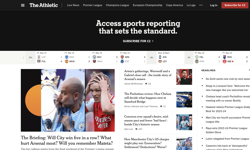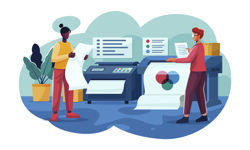Living in the age of the internet, it’s easy to forget how many of the marketing fundamentals remain little affected, if at all, by what’s happening at the cutting edge of technology.
Nowhere is that more true than in direct response copywriting, where almost everything we write is aimed – or at least should be – at getting the website visitor or email recipient to take the appropriate response: either to make a purchase then and there, sign up to an ezine or request further information on a product or service.
It sometimes seems that the siren call of new technologies has blinded us to the fundamentals of good copywriting. Technological change is assumed to rewrite all the old rules. Or, at the very least, so much attention is focused on the new, we’re in danger of forgetting time-tested principles and techniques.
That’s why I often refer clients and colleagues to a book on the fundamentals of direct response copywriting that, ironically, was written close on 100 years ago. And I frequently re-read it myself, when I get stuck on a particular piece of copy.
Scientific Advertising, published in 1923 by the leading copywriter of the day, Claude Hopkins, is a useful reminder in these hectic days of change that the fundamentals of gaining attention, persuading, and achieving action alter at a more glacial pace, if at all.
When I read Scientific Advertising, I’m reminded that good copy – while it certainly needs to take account of the technological and other realities of modern life – must remain grounded in the time-tested principles of human nature.
Here are just four of the many fundamental copywriting principles that Claude Hopkins learned the hard way.
1. Write your copy as if you are addressing an individual person, your ideal prospective customer.
Hopkins was, perhaps, the advertising industry’s foremost exponent of the idea that direct marketing is ‘salesmanship in print’. Each email you send, each direct mail letter you post should be regarded as the equivalent of a face-to-face sales call.
To do that, you first need to approach your copywriting with the correct mindset:
"When you plan or prepare an advertisement, keep before you a typical buyer. Your subject, your headline has gained his or her attention. Then in everything be guided by what you would do if you met the buyer face-to-face. If you are a normal man and a good salesman you will then do your level best.
Don’t think of people in the mass. That gives you a blurred view. Think of a typical individual, man or woman, who is likely to want what you sell. Don’t try to be amusing. Money spending is a serious matter. Don’t boast, for all people resent it. Don’t try to show off. Do just what you think a good salesman should do with a half-sold person before him."
And, to achieve that, you must forget for the moment that your job is to sell. You need to put yourself squarely in the shoes of the typical prospect, to understand their wants, needs and motivations. It’s what I call ‘focusing on the buy, instead of the sell’.
As Hopkins frequently observed when dealing with his clients:
"The maker of an advertised article knows the manufacturing side and probably the dealer’s side. But this very knowledge often leads him astray in respect to customers. His interests are not their interests. The advertising man studies the consumer. He tries to place himself in the position of the buyer. His success largely depends on doing that to the exclusion of everything else."
In a nutshell, that’s one of the key advantages of hiring an outside copywriter. It’s easier for them to ‘take the side’ of the buyer, and write persuasive copy accordingly. The inhouse copywriter above all needs to guard against this common problem:
"Ads are planned and written with some utterly wrong conception. They are written to please the seller. The interests of the buyer are forgotten. One can never sell goods profitably, in person or in print, when that attitude exists."
That’s why we see so much feature-led copy, with scarce if any attention paid to the real benefits for the buyer.
2. Be as specific in your copy as you can: generalities and superlatives undermine your case – and your credibility.
Sales copy frequently makes loose claims to be the ‘best’, and asserts the buyer is going to get a ‘unique’ offer. We say the product or service will ‘save you time and money – and keep you ahead of the curve’. But we often fail to take the next, key step. To explain, in words that directly resonate with the day-to-day interests and activities of the prospective buyer, precisely how these advantages are to be attained.
The result: a sales pitch that is weak and unconvincing.
Hopkins explains what effect such loose claims have on the reader:
"Platitudes and generalities roll off the human understanding like water from a duck. They leave no impression whatever. To say, ‘Best in the world’, ‘Lowest price in existence’, etc are at best simply claiming the expected. But superlatives of that sort are usually damaging. They suggest looseness of expression, a tendency to exaggerate, a carelessness of truth. They lead readers to discount all the statements that you make."
By contrast:
"… a man who makes a specific claim is either telling the truth or a lie. People do not expect an advertiser to lie. They know that he can’t lie in the best mediums… So a definite statement is usually accepted. Actual figures are not generally discounted. Specific facts, when stated, have their full weight and effect."
Hopkins’ bottom line: "The weight of an argument may often be multiplied by making it specific."
3. Tell the complete story.
One of the most common questions I’m asked is: "how long should my copy be?" Online marketers are particularly sensitive to copy length, having heard the oft-repeated mantra: when writing online copy, take the copy you would write offline and cut it in half or more.
Like most such injunctions, the answer to how long copy should be is: it depends on the specifics of your product, market, and what you’re trying to achieve with that particular piece of copy: get a sale, an ezine sign-up, or a request for more information.
Certainly, online copy needs to respect both the medium and the mindset of the reader. Notwithstanding recent improvements in typical monitor sizes and screen resolutions, text is still harder to read online than in hard copy format. And the attention span of the email recipient and web page visitor is certainly short.
But, that’s not to say all emails should be no longer than 2-3 paragraphs, or that a web page shouldn’t go beyond the fold, as some of the online copywriting books would have you believe. Indeed, a lot of online copy falls short of what it is intended to do and, not surprisingly, disappoints in terms of the anticipated audience response.
Hopkins, as always, comes up with a sensible rule of thumb that stands the test of time. It’s not tied to time and place, or technology platform. Instead it respects the consistency over time of human nature:
"There is no fixed rule on this subject of brevity. One sentence may tell a complete story on a line like chewing gum… But, whether long or short, an advertising story should be reasonably complete."
Because Hopkins knew from bitter experience how hard it is simply to secure a prospect’s attention. And that was at a time when the volume of advertising was a tiny fraction of what it is today!
So, he cautions against copy that is too short to do an adequate job of presenting your product or service. After all:
"Any reader of your ad is interested, else he would not be a reader. You are dealing with someone willing to listen. Then do your level best. That reader, if you lose him now, may never again be a reader. You are like a salesman in a busy man’s office. He may have tried again and again to get entrance. He may never be admitted again. This is his one chance to get action, and he must employ it to the full."
So much of the ongoing debate over long versus short copy misses the point, be it online or offline copy. The question to ask is: what action do I want the reader to take, and what do I need to tell him / her in order to get that action from the greatest number of readers?
Much contemporary copy, offline and online, is too short to achieve this objective.
So, a final word on the subject from the master salesman:
"The only readers we get are people whom our subject interests. No one reads ads for amusement, long or short. Consider them as prospects standing before you, seeking for information. Give them enough to get action."
4. Give a compelling reason to take action – and do it now.
The offer is just as important in online direct response marketing as it is in the offline world. Yet, all too often there’s no convincing call to action.
As Hopkins knew from decades of writing direct response copy:
"People are naturally dilatory. They postpone, and a postponed action is all too often forgotten."
The answer: come up with a compelling proposition, one your reader would be foolish to ignore – and then place a limit on it:
"Do something if possible to get immediate action. Offer some inducement for it. Or tell what delay may cost. Note how many successful selling letters place a limit on an offer. It expires on a certain date. That is all done to get a prompt decision, to overcome the tendency to delay."
Sounds blindingly obvious? Consider this. I recently reviewed dozens of pieces of current promotional copy for a major international B2B publisher. Fewer than 5% of the offers contained a time limit.
It’s all too easy nowadays to forget or overlook some of the most established principles of direct marketing. Particularly if you’re operating in a high-pressure work environment where you’re expected to come up with polished copy in between dealing with suppliers, re-forecasting your budget figures, managing your marketing team, et cetera.
So, why not try this simple exercise on your next commute to or from work? Read Hopkins’ book from cover to cover, marking up with pen, pencil or highlighter the points that strike a chord. It’ll take you less than an hour, so short and to the point is the writing. Then read the book again, at least once more. See how many of the principles you’re currently putting into practice – and which ones could do with a bit more focus.
Whatever you do, don’t make the mistake of being sidetracked, as many modern readers are, by the book’s often quaint English and the references to long-gone products and sales distribution practices.
Scientific Advertising is a veritable goldmine of information. It could even be the most useful book on copywriting you ever own.
| Scientific Advertising is available as a free download in Adobe Acrobat ebook format from: www.mortongregory.com/downloads/claude-hopkins-on-scientific-advertising.pdf |










